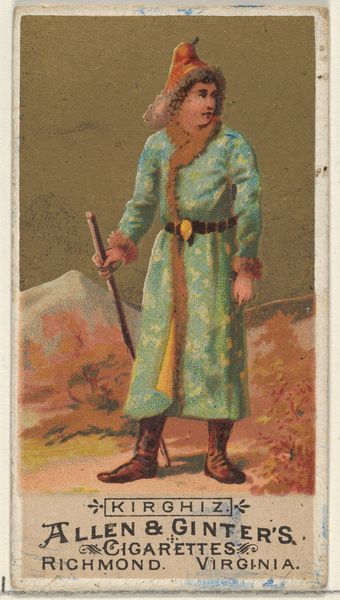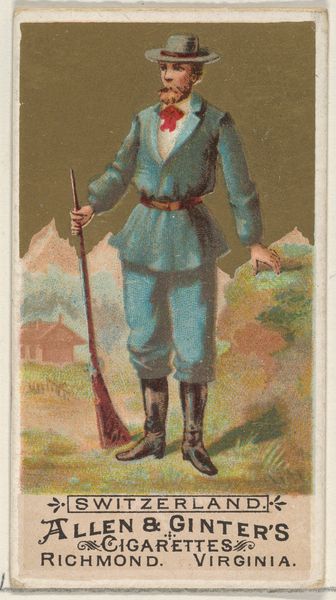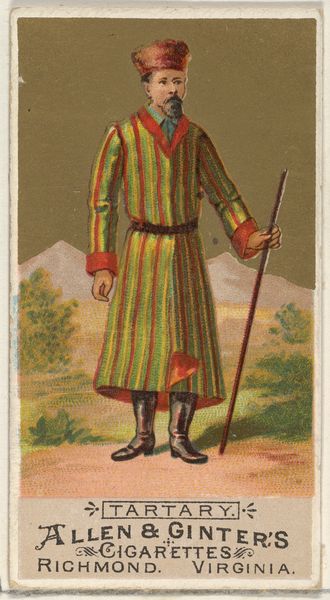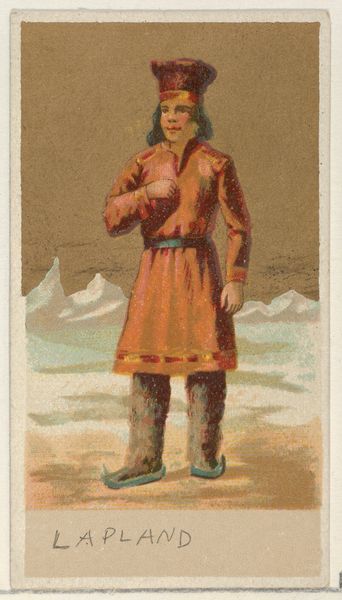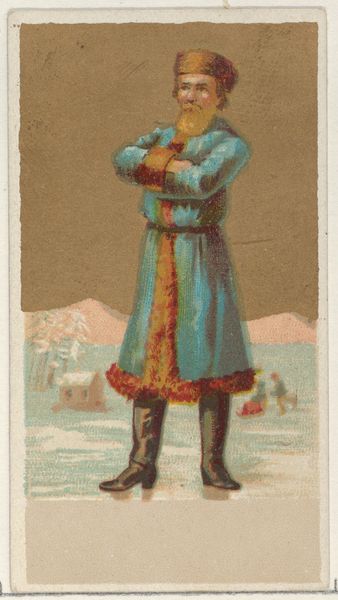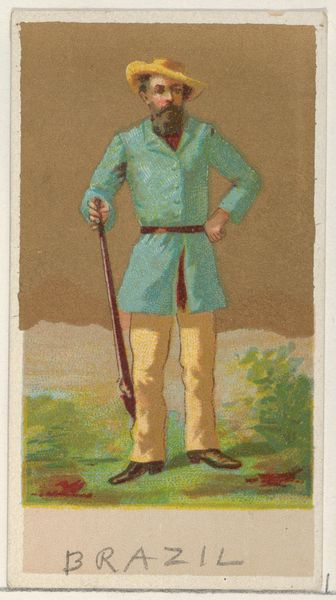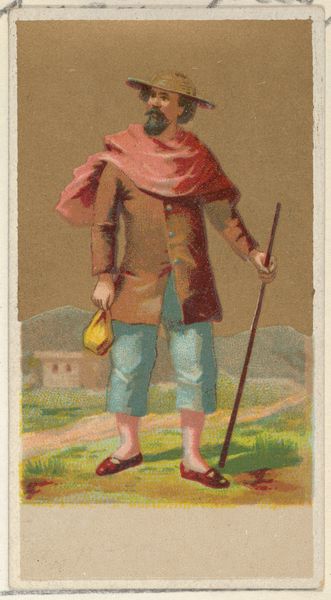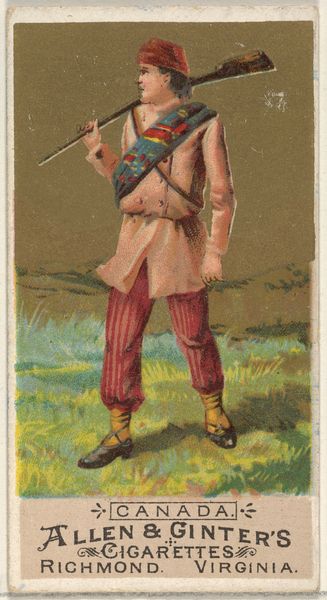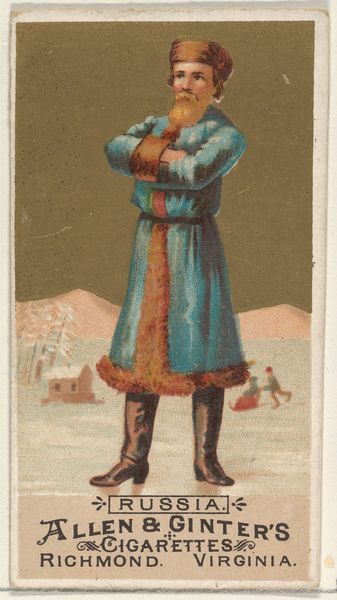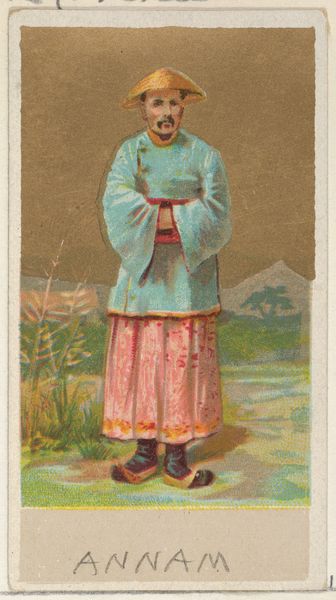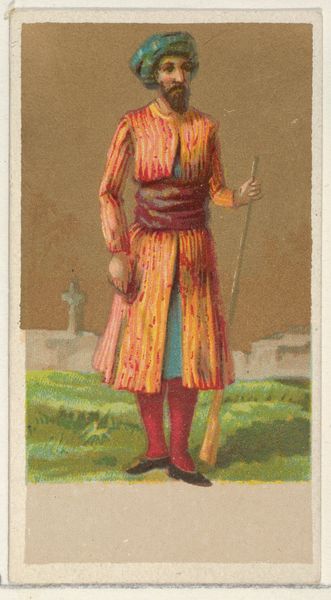
Kirghiz, from the Natives in Costume series (N16), Teofani Issue, for Allen & Ginter Cigarettes Brands 1886 - 1900
0:00
0:00
drawing, print
#
portrait
#
drawing
# print
#
figuration
#
coloured pencil
#
orientalism
#
men
#
watercolor
Dimensions: Sheet: 2 3/4 x 1 1/2 in. (7 x 3.8 cm)
Copyright: Public Domain
Curator: Here we have "Kirghiz," part of the Natives in Costume series issued by Allen & Ginter for cigarette cards, dating roughly from 1886 to 1900. It’s a color drawing and print currently residing at the Metropolitan Museum of Art. Editor: My initial impression is that of vibrant, perhaps artificial color against a washed-out background. It almost looks like a doll rather than a real person, due to the strange texture and stiff pose. I'm curious about the process that produced these affordable images. Curator: Absolutely. The "doll-like" appearance strikes me as part of the broader Orientalist aesthetic of the time. Notice how details are rendered with a sense of exoticism – the fur trim on the coat, the ornate belt buckle. It speaks to a Western fascination, often inaccurate, with far-off lands and cultures. The Kirghiz people themselves become symbols of the “Other.” Editor: And considering it was intended as a cigarette card insert, the materials would need to be mass-produced and fairly durable, meaning certain printing processes were used that emphasized particular types of colorfast inks and probably sacrificed a level of detail and accuracy. This contributes, surely, to this sense of removed reality, mediated through layers of consumption and industrial processes. How much would a pack of these cigarettes have cost? That shapes my understanding of this art's cultural footprint. Curator: Precisely. There’s a fascinating tension here – these cards were intended to be fleeting, disposable, and yet they carry these potent symbolic and historical meanings. This romanticized image was a means to brand and sell a product, creating a very particular fantasy for the consumer. Editor: It’s incredible to think of the labor and resources that were poured into making millions of these little images that are really nothing more than capital being converted into the illusion of exotica. How does the Met frame the imperial and extractive story behind the piece? Curator: They do so quite consciously. Highlighting that these cards offered an idea of foreign cultures which ultimately were commodified and disseminated by capitalist means. The aim is to unravel the layered meanings. Editor: It all comes back to what art objects, particularly those embedded in commercial frameworks, truly represent. It's never *just* an image. Curator: Yes. Analyzing works such as these allows us to trace the complex intersection of cultural appropriation, capitalist consumerism, and artistic representation. Editor: Ultimately a humble but critical starting point for so many lines of historical and cultural inquiry.
Comments
No comments
Be the first to comment and join the conversation on the ultimate creative platform.
